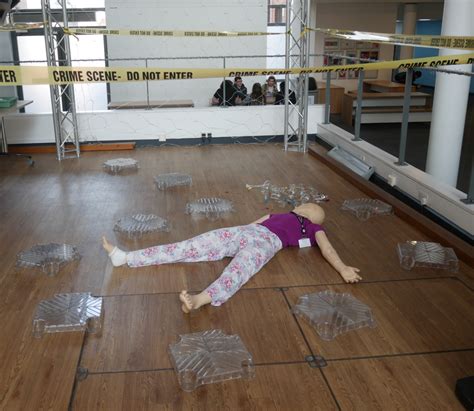creating fake photos of scenes that are essentially altered ,Deep Fakes and Impact to Art Photography ,creating fake photos of scenes that are essentially altered,Photograph manipulation involves the transformation or alteration of a photograph. Some photograph manipulations are considered to be skillful artwork, while others are considered to . Shop Pink Versace Slides at Bloomingdales.com. Free Shipping and Free Returns available, or buy online and pick up in store! . Women's Medusa Raffia Block Heel Slide Sandals. $795.00 . Now $477.00 (40% OFF) New Markdown. LOYALLISTS: $25 REWARD FOR EVERY $100. Versace. Women's Leather T Strap Sandals. $895.00 .

Photography, a medium once thought of as a definitive record of truth, has a long and complex history of manipulation, fakery, and posed images. The exhibition *Altered Images: 150 Years of Posed and Manipulated Documentary Photography* serves as a powerful reminder that the line between reality and fiction in photography has always been blurry. From the 19th century to today, photographers have used techniques ranging from simple retouching to advanced digital manipulation to create images that tell a different story than what was originally captured. In a world increasingly reliant on visual media, being able to spot manipulated photos is more important than ever.
In this article, we’ll dive into the history of photographic manipulation, explore how to spot a manipulated image, and discuss the growing role of artificial intelligence and deep fakes in altering visual content. We’ll also examine the broader implications of altered images in both art and journalism and consider the ethical challenges posed by fake photographs.
1. The History of Altered Photographs:
# *150 Years of Manipulation*
Photography has long been more than just a tool for capturing reality. From the very first images taken in the 19th century, photographers sought to adjust, enhance, or even entirely fabricate scenes for various purposes. One of the earliest examples of photographic manipulation can be traced back to *The Blue Boy* (circa 1860), a famous portrait manipulated by the artist and photographer, Oscar Rejlander. Using multiple exposures, Rejlander combined the heads of two separate figures into one photo. The idea was to create a striking, idealized image that conveyed more artistic meaning than any single exposure could have achieved.
In the 20th century, photographic manipulation became even more advanced, and photographers began experimenting with techniques such as double exposure, airbrushing, and montage. However, the mass public remained unaware of the potential for manipulation until the rise of photojournalism in the 1930s and 1940s. As documentary photography gained prominence, the public began to rely on photographs to verify and capture the truth of historical events.
Despite this growing trust in photography, the manipulation of images continued, albeit more subtly. In many cases, manipulated photos were used to support political or ideological agendas. During World War II, for example, both the Axis and Allied powers produced altered photographs that played on public sentiment. In the Soviet Union, leaders like Stalin were often depicted in idealized or mythologized ways through the strategic removal of individuals from photos or the reshaping of their images to portray them as heroic figures.
*Altered Images: 150 Years of Posed and Manipulated Documentary Photography* showcases these historical artifacts and reminds us that the concept of “truth in photography” is not as absolute as it may seem.
2. How to Spot a Manipulated Image
With the advent of digital photography and sophisticated editing tools, spotting a manipulated image has become more difficult than ever. However, there are still some key indicators that can help us identify a photo that has been altered.
a. Inconsistent Lighting and Shadows
One of the first clues to look for is the lighting. In manipulated images, lighting is often inconsistent. The shadows may not line up properly with the light source, or there may be unnatural reflections on surfaces. These inconsistencies can indicate that parts of the image have been added or removed digitally.
b. Unnatural Edges and Blurring
Another common sign of a manipulated image is unnatural edges, especially around the borders of objects or people in the photo. In many cases, when elements are added to an image, the edges can appear too sharp or too soft in comparison to the rest of the photo. This is particularly noticeable when the image has been poorly edited, with visible seams where elements were spliced together.
c. Disproportionate Objects or Figures
Manipulated images often feature objects or figures that are out of proportion. For example, a person’s head might appear unnaturally large compared to their body, or a background object might look distorted. These irregularities may result from using software to crop or distort certain elements.
d. Metadata Analysis
One of the most reliable ways to detect manipulation is by checking the photo’s metadata. Photographs taken with digital cameras contain metadata that includes information about the time, date, camera settings, and sometimes even software used to edit the image. By analyzing this metadata, you can often determine if a photo has been altered, and which tools may have been used in the process.

creating fake photos of scenes that are essentially altered Men's Necklaces. Versace's metal necklaces for men come in a wide range of styles, embellished with Medusa and Greca accents. HIDE FILTERS FILTERS. 32 Products Available. FILTERS . .
creating fake photos of scenes that are essentially altered - Deep Fakes and Impact to Art Photography